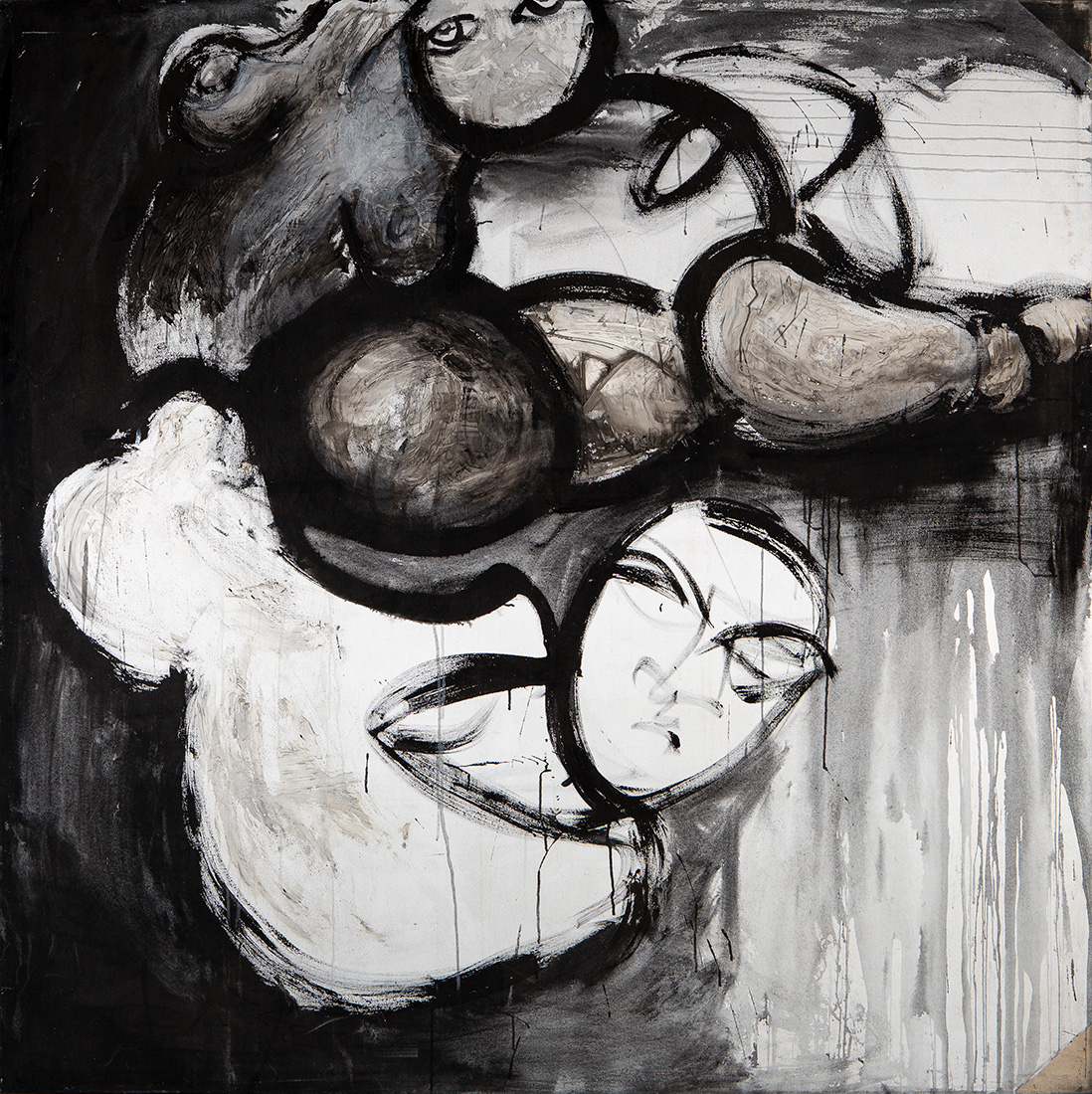With “Metamorphosis,” Southern California-based artist Yolanda González offers a haunting solo show of monochrome images powerful enough to overwhelm any technicolor image.
Her original “Metamorphosis” series, an experimental series she began in 1995, was created after a residency program in Japan. This and a new series, “Metamorphosis II,” fuse the culture of Japan with her Chicana heritage. Her leaching of color from what could have been vibrant paintings coincided initially with the loss of her close friend Cella Coffin, and mirrors the stark personal darkness González herself experienced.
The 2020 iteration was created to honor her late mother, Yolanda Lopez González, but also reflects the current pandemic. Like the images themselves—turning inward, expanding outward—González has said she found herself returning to the same emotional space as with the earlier death of a loved one. The intensity of this new series is somehow both bleak and inspirational. With their twisted, inverted, puzzle-like shapes, her paintings feel muscular, aching, explosive. They are vital and complex, riven with sorrow, and raw with hope and longing.
The title of the series evokes the artist’s palette transformation from bright color to this barren yet beautiful black and white, as well as the transformation of the body from life to death, and the passage of the soul. González paints images that shiver and reach, transcend and reference; these are works that move the viewer into a dimension that is no longer physical but spiritual.

Yolanda González, Crossroads, 2020. Courtesy Bermmudez Projects.
One of the most compelling works here is Reaching for Sanity (1993). It depicts an outstretched hand, digits distended, palm open. But, as if the palm was being read, the fingers reveal themselves to contain three faces attached to one knotted body, two more strongly visible than the third, forming impressions of suffering or rest: a small but visceral moment in a life, or a multitude of moments within that life, during the ultimate rite of passage.
González’ No is similarly structured: a pretzel of a body with four human heads, one of which is nearly featureless and dark, as if shrouded, and one which is bisected, Picasso-like, lips separate. There is also a simian-like head, which seems to embrace the other beings, a universal mother. There is a sense of the embryonic, of gestation, as well as overall transformation.
In the artist’s piece No. 2, there is a clearly delineated dominant face on a body askew, shaped as if it were a floating cloud. This is a face awash in knowledge, in grief, in understanding. Behind it, a fainter image, more anguished; and a darkened oval. Body parts float and seem interchangeable – breast, arm, ears, and what may be a penis, from which the cloud shape itself seems to have emerged.
Consisting of some 30 artworks in all, González’ “Metamorphosis” is an evolution into, through and out of darkness, offering the perfect, swirling, broken, all-knowing face of change and passage for the current, still-pandemic world.


